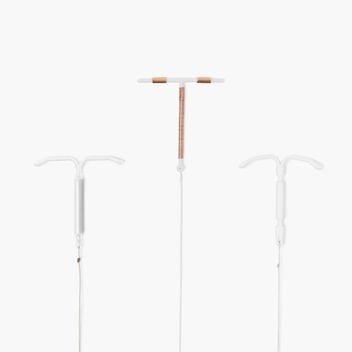How does IUD removal work?
Your IUD will protect you from pregnancy for 3 to 12 years, but your doctor or nurse can take it out any time before that if you like. Removal is simple.
How will it feel to get my IUD removed?
Getting your IUD taken out is pretty quick and simple. A health care provider gently pulls on the string, and the IUD’s arms fold up and it slips out. You may feel cramping for a minute as it comes out.
There’s a small chance that your IUD won’t come out easily. If this happens, your nurse or doctor may use special instruments to remove it. Very rarely, surgery may be needed.
When should I get my IUD removed?
You can get your IUD taken out whenever you want. If your IUD is going to expire but you still don’t want to get pregnant, you’ll have to replace it.
-
Paragard should be replaced after 12 years.
-
Mirena should be replaced after 8 years.
-
Liletta should be replaced after 8 years.
-
Kyleena should be replaced after 5 years.
- Skyla should be replaced after 3 years.
What should I expect after I get my IUD removed?
You should feel completely normal after getting your IUD taken out. You may have some light bleeding after IUD removal, and some slight cramping during and right after removal.
Any side effects that you may have had while you were on the IUD will eventually go away after your IUD is out. Unless you start a hormonal birth control method after getting your IUD out, your period will go back to how it was before you got your IUD. Read more about what side effects to expect after getting your IUD out.
How soon can I get pregnant after getting my IUD removed?
Your fertility goes back to normal right after your IUD is out, so it's possible to get pregnant right away. If you get your IUD removed and you don’t want to get pregnant, use another method of birth control.
Where can I get my IUD removed?
You can usually get your IUD removed at the same health center that put it in for you. But any nurse or doctor who puts in IUDs can also remove them. The nurses and doctors at Planned Parenthood health centers, family planning clinics, and private gynecologist offices can all do IUD removal. Use our health center locator to find a Planned Parenthood health center that offers IUD removal near you.
How much does it cost to get my IUD removed?
The price of IUD removal varies depending on where you go, costing anywhere from $0-$250. You might be able to get your IUD removed for free (or for a reduced price) if you have health insurance or qualify for certain programs.
Because of the Affordable Care Act (aka Obamacare), most health insurance plans must cover all doctor’s visits related to birth control, including IUD removal. You can call the number on the back of your health insurance card or talk with your nurse or doctor if you have questions. Learn more about health insurance and affordable birth control.
If you don't have health insurance, you still have options. Depending on your income and legal status in the U.S., you may be able to enroll in Medicaid or other programs that can help you pay for your IUD removal and other health care.
Planned Parenthood health centers work to provide you with the services you need, whether or not you have insurance. Most Planned Parenthood health centers accept Medicaid and health insurance, and many charge less for services depending on your income. If you need to get your IUD removed and you’re worried about cost, contact your local Planned Parenthood health center for more information about affordable IUD removal near you.
 Abstinence
Abstinence
 Breastfeeding
Breastfeeding
 Cervical Cap
Cervical Cap
 Condom
Condom
 Diaphragm
Diaphragm
 FAM
FAM
 Female Condom
Female Condom
 Implant
Implant
 IUD
IUD
 The Patch
The Patch
 The Pill
The Pill
 The Ring
The Ring
 The Shot
The Shot
 Spermicide
Spermicide
 Sponge
Sponge
 Sterilization
Sterilization
 Vasectomy
Vasectomy
 Withdrawal
Withdrawal